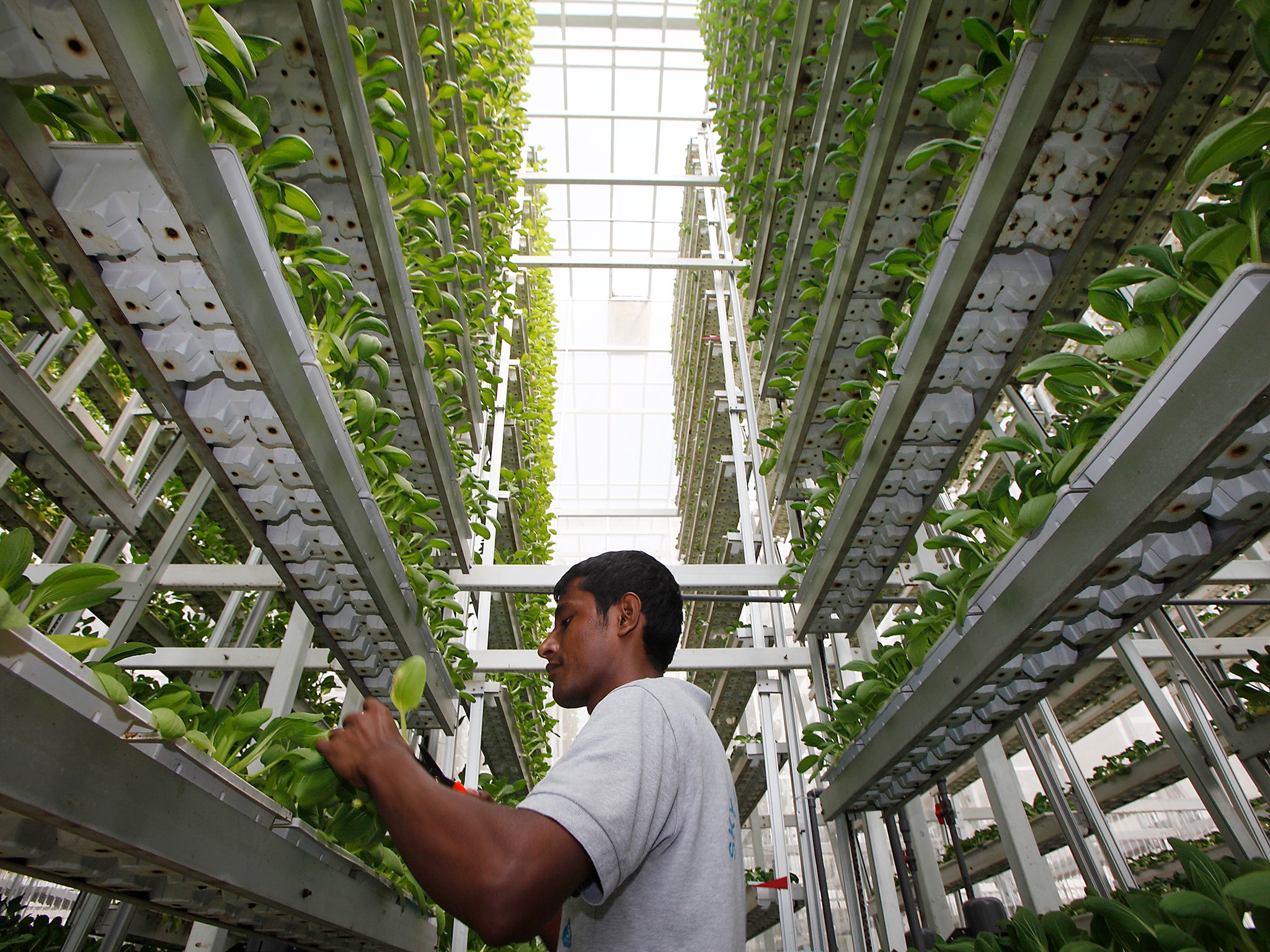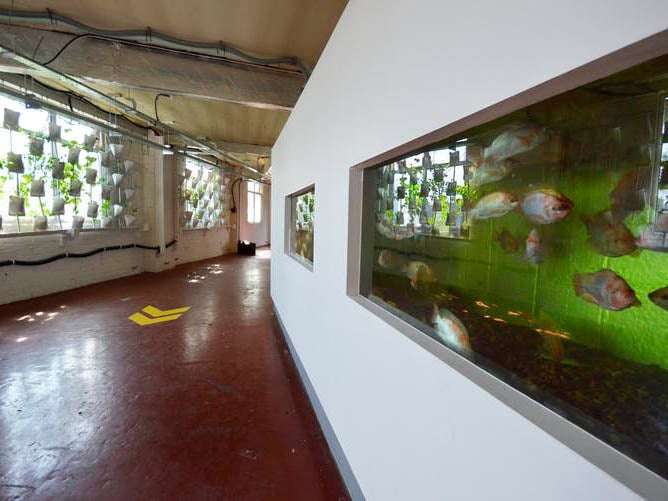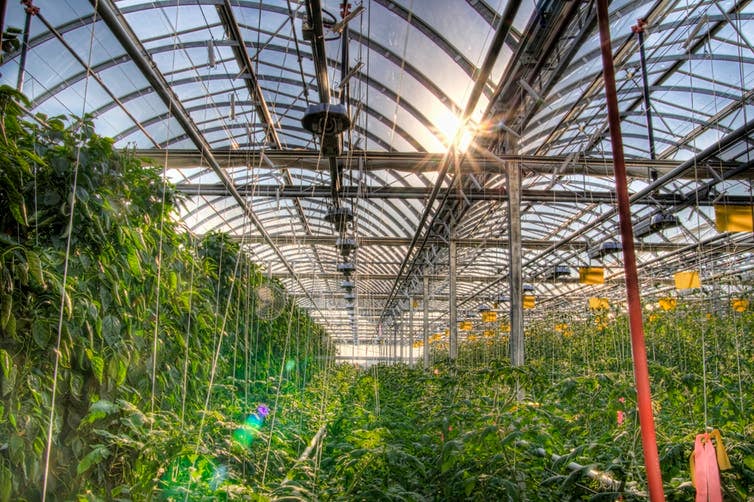Why vertical farming isn't a miracle solution to food security
Vertical farming is great for growing lots of food in a small space, but productivity comes at a cost: high energy use. We need to consider other, more sustainable, types of urban agriculture, says Andrew Jenkins

Your support helps us to tell the story
From reproductive rights to climate change to Big Tech, The Independent is on the ground when the story is developing. Whether it's investigating the financials of Elon Musk's pro-Trump PAC or producing our latest documentary, 'The A Word', which shines a light on the American women fighting for reproductive rights, we know how important it is to parse out the facts from the messaging.
At such a critical moment in US history, we need reporters on the ground. Your donation allows us to keep sending journalists to speak to both sides of the story.
The Independent is trusted by Americans across the entire political spectrum. And unlike many other quality news outlets, we choose not to lock Americans out of our reporting and analysis with paywalls. We believe quality journalism should be available to everyone, paid for by those who can afford it.
Your support makes all the difference.A company in Scotland has unveiled what it claims is arguably the world’s most technically advanced indoor farm. Intelligent Growth Solutions’ vertical farm uses artificial intelligence and specially designed power and communication technologies. The firm says this reduces energy costs by 50 per cent and labour costs by 80 per cent when compared to other indoor growing environments, and can produce yields of up to 200 per cent more than that of a traditional greenhouse.
Vertical farms like this aim to minimise water use and maximise productivity by growing crops “hydroponically” in small amounts of nutrient-rich water stacked in a climate-controlled building. But it’s important to recognise that the increased productivity of indoor vertical farming comes at the cost of much higher energy usage due to the need for artificial lighting and climate control systems.
By 2050, global food production will need to increase by an estimated 70 per cent in developed countries and 100 per cent in developing countries to match current trends in population growth (based on production information from 2005 to 2007). But in countries that already use the majority of their land for farming, this is easier said than done.
The UK, for example, uses 72 per cent of its landmass for agricultural practices but imports nearly half of the food it consumes. To improve domestic food security and prevent natural habitats from being destroyed for new farmland, countries such as the UK need to consider new methods of food production.
Urban farming presents a unique opportunity to grow food on already developed land, increase domestic food production and minimise the distance food travels. Since the publication of Dickson Despommier’s 2010 book The Vertical Farm: Feeding the World in the 21st Century, vertical farming has become synonymous with urban farming. Although the agricultural skyscrapers illustrated in Despommier’s book are yet to be realised, the idea of growing food vertically has captured the minds of designers and engineers alike.

The energy demand associated with vertical farming, however, is much higher than other methods of food production. For example, lettuces grown in traditionally heated greenhouses in the UK need an estimated 250kWh of energy a year for every square metre of growing area. In comparison, lettuces grown in a purpose built vertical farm need an estimated 3,500kWh a year for each square metre of growing area. Notably, 98 per cent of this energy use is due to artificial lighting and climate control.
Even with the reductions promised by Intelligent Growth Solutions, the energy demand associated with most vertical farms would still be very high, which positions vertical farming in a grey area. On the one hand, the world needs to produce more food, and on the other hand, it needs to reduce energy use and the production of greenhouse gases.
Urban alternatives
But indoor vertical farming isn’t the only way to grow food in cities. A plethora of naturally lit methods also exist, from raised beds in communal gardens to rooftop aquaponic systems that grow food with the help of fish. These methods all require less energy when compared to vertical farming because they don’t need artificial lighting.

When viewing cities from above, it is clear to see just how many flat roofs are left vacant and the agricultural opportunities they represent. In the city of Manchester in the UK, unoccupied flat roofs account for an area of 136 hectares, representing one-third of the city’s inner urban area.
Gotham Greens in New York and Lufa Farms in Montreal, for example, are both commercial farms that use vacant roof space to grow food in naturally lit hydroponic greenhouses. Given the success of such projects and the area of roof space available, it seems strange that so many companies would skip ahead to methods of food production that still need a lot of costly development, as well as more energy to operate. Although they can’t grow as much food, rooftop greenhouses need at least 70 per cent less energy for each square metre of growing area than artificially lit vertical farms.
Having designed and built a rooftop aquaponic system myself in an ex-industrial building in Salford in the UK, I am surprised that more companies are not considering and maximising the opportunities presented by naturally-lit urban environments. If nothing else, I believe we should be exploring the potential of naturally lit environments before we delve into dimly lit buildings where special technologies, artificial lighting and air handling units are needed to produce food.
There is little question that vertical farms will play a big role in urban farming and agriculture in the future. But when considering any method of food production, we need to understand the impact and energy use of the practice to ensure it is a sustainable and comprehensive response to global food demands. Vertical farming currently requires a lot of energy, which will hopefully decrease over time as companies like Intelligent Growth Solutions make technical advances. But for the time being, the practice of vertical farming is still a long way from being a sustainable method of agriculture.
Andrew Jenkins is a research fellow at the School of Natural and Built Environment at Queen’s University Belfast. This article first appeared on The Conversation
Join our commenting forum
Join thought-provoking conversations, follow other Independent readers and see their replies
Comments